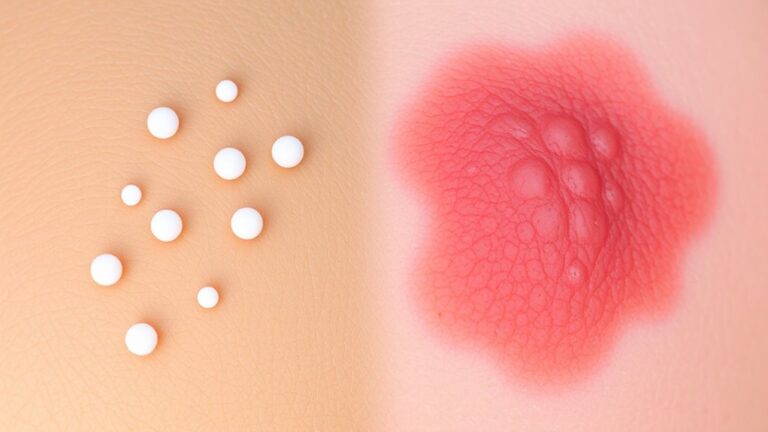In case you’re anxious about getting a blood test, you’re not alone! Many people worry about what the results could indicate. The RDW blood test provides useful insights into your red blood cells, and comprehending it can prepare you with information to take charge of your health. Here, you’ll uncover what RDW measures, why it’s significant, and how to prepare for your test, ensuring you’re ready for every step of the process.
What Is a RDW Blood Test?
At the time your doctor orders an RDW blood test, you’re looking at a nifty tool that checks out the size and volume of your red blood cells, or RBCs. This test measures the red cell distribution width (RDW), giving comprehension into the variation in red blood cell size.
As part of a complete blood count (CBC), it helps identify potential health concerns. A normal RDW falls between 11.5% and 14.5%; numbers outside this range could suggest conditions like anemia or nutritional deficiencies.
An increased RDW can indicate issues such as chronic diseases or problems with your bone marrow affecting RBC production. Grasping your RDW blood test results can be crucial for maintaining your general health.
Purpose and Importance of the RDW Test
Comprehending the purpose and significance of the RDW test can be an essential step in managing your health. The RDW, or Red Cell Distribution Width, measures the size variation of your red blood cells (RBCs) and is often part of a complete blood count (CBC).
This test helps diagnose conditions like anemia, including iron deficiency anemia and vitamin B12 deficiency. A normal RDW range is typically between 11.5% to 14.5%.
Higher values indicate greater size variation, which can signal blood disorders or nutritional deficiencies. Through analyzing RDW results with Mean Corpuscular Volume (MCV), healthcare providers pinpoint specific causes of anemia and guarantee appropriate treatment.
This makes the test critical for timely diagnosis and improved health results.
How to Prepare for an RDW Test
Preparing for an RDW test is pretty straightforward, and you won’t need to fast unless other tests are involved.
Just wear short sleeves or loose clothing to make it easier for the blood draw, and stay hydrated to help out your veins.
Keep in mind to let your healthcare provider know about any medications or supplements you’re taking, as they can impact your results.
No Special Preparation Required
Once you get ready for your RDW test, you’ll be relieved to know that no special preparation is required. You don’t need to fast or follow specific dietary restrictions unless your healthcare provider orders additional tests.
To make your blood draw easier, wear short sleeves or loose clothing that offers good vein access. Staying well-hydrated is a simple yet effective tip; it helps make your veins more accessible for the test.
Also, inform your healthcare provider about any medications or supplements you’re taking since they can affect your results. Avoid strenuous exercise right before the test, as it can temporarily change your blood parameters.
Just relax, and you’ll do great during the RDW blood test!
Blood Sample Collection Process
Your RDW test expedition takes the next step with the blood sample collection process. To gather the blood sample, a healthcare professional will perform a venipuncture, inserting a sterile needle into a vein in your arm or hand.
There’s no need to worry; this process usually takes under five minutes and could cause minor discomfort or bruising. The collected blood is placed in special EDTA tubes that help prevent clotting, ensuring accurate results for your RDW test.
Keep in mind, no fasting is required unless you’re having additional tests like iron or B12 levels done. Once your blood sample is processed, you can expect results within 24 to 48 hours, making it a quick and efficient step in your health quest.
The RDW Blood Test Procedure
Getting an RDW blood test is a straightforward experience, and you don’t need to stress about it. The procedure usually involves a quick blood draw from a vein in your arm using a small needle. It takes just a few minutes, and you won’t need any special preparation, unless it’s part of a complete blood count (CBC) that requires fasting.
Once the blood is drawn, your sample heads to the laboratory. There, automated analyzers measure the variation in the size and volume of red blood cells (RBC).
Your results will typically be available within 24–48 hours and reported as a percentage, with normal RDW ranges generally between 11.5% and 14.5%. Don’t worry; any discomfort you feel is usually temporary!
Understanding RDW Test Results
As you obtain your RDW test results, it could feel a bit overwhelming initially, but grasping what those numbers signify can truly strengthen you. The RDW blood test measures the variation in size of red blood cells (RBCs), giving critical understanding into your health. Here’s how to interpret those results:
- A normal RDW range is 11.5%–15%, suggesting uniform RBC sizes.
- High RDW levels, above 15%, often indicate iron deficiency, B12/folate deficiency, or chronic disease.
- Low RDW levels, below 11.5%, are rare and could suggest a homogeneous RBC population.
- RDW is best interpreted with MCV (mean corpuscular volume), which helps diagnose anemia accurately.
Understanding these numbers in conjunction with your complete blood count (CBC) can enable you to take charge of your health.
Conditions Indicated by Abnormal RDW Levels
While moving through your health, it’s essential to recognize what abnormal RDW levels could indicate about your body. High RDW levels can signal iron deficiency anemia, often a red flag before low hemoglobin sets in.
Should your RDW be elevated, it could also point to vitamin B12 or folate deficiency anemias, common culprits in megaloblastic anemia. In heart failure, a RDW above 16% correlates with a heightened mortality risk.
With chronic kidney disease, a RDW greater than 15.5% triples your cardiovascular event risk. Liver cirrhosis, often overlooked, is tied to RDW values over 14%.





